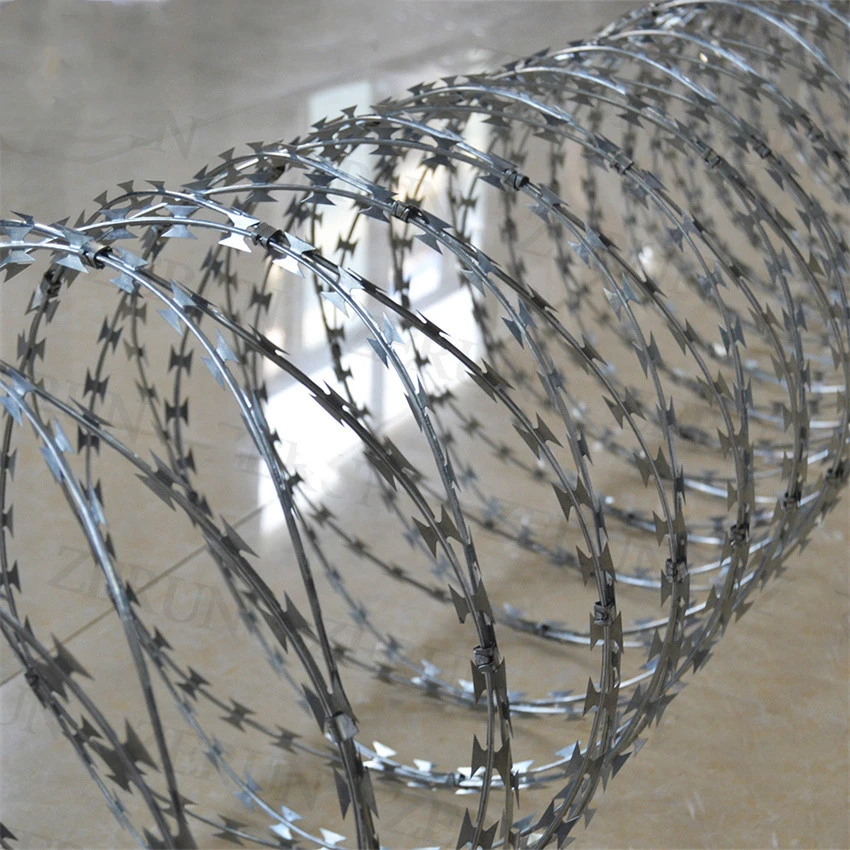Dec . 24, 2024 21:45 Back to list
Twisted Bindings of Barbed Wire Wrapped in a Coil
The Symbolism of a Coil of Barbed Wire
Barbed wire, a seemingly mundane fencing material, carries with it significant symbolism and historical context. The coil of barbed wire has become an emblem of boundaries—both physical and metaphorical. This article explores the various dimensions of barbed wire, examining its origins, uses, and the deeper meanings associated with it.
Barbed wire was invented in the late 19th century, primarily as a means to protect property and livestock. Joseph Glidden, an Illinois farmer, patented his design in 1874, which featured sharp barbs protruding at regular intervals along the wire. This innovation revolutionized agricultural practices, enabling farmers to enclose vast expanses of land more efficiently than traditional wooden fences. The use of barbed wire quickly spread across the American West during the cattle ranching boom, symbolizing the often turbulent progress of frontier expansion.
However, barbed wire is not solely a practical tool for keeping cattle in or intruders out. Its introduction marked the beginning of an era characterized by increased regulation and control. As the world continued to industrialize and urbanize, barbed wire became a symbol of ownership and exclusion, representing the fine line between security and oppression. This duality is evident in various narratives surrounding barbed wire throughout history.
One of the most poignant uses of barbed wire has been in wartime contexts. Barbed wire became synonymous with the trenches of World War I, where it was employed to protect soldiers from enemy advances. The imagery of soldiers maneuvering through fields of barbed wire evokes strong emotions, illustrating the horrors and sacrifices made during wartime. Such wire was often seen as a tool of war, creating barriers not only between armies but also between humanity and its better instincts.
coil of barbed wire

In more contemporary contexts, barbed wire has taken on a different significance. Its presence in refugee camps and militarized borders underscores the harsh realities faced by those displaced by conflict, persecution, or economic hardship. The coil of barbed wire serves as a stark reminder of the barriers that separate us—often hindering the basic human desire for safety and belonging. In this light, barbed wire symbolizes not just protection for some, but exclusion for many. The sight of barbed wire can elicit feelings of fear, despair, and anger, raising questions about the nature of security and the ethics of border control.
Barbed wire also permeates artistic and literary expressions. Artists and authors have utilized this powerful symbol to comment on themes of confinement, isolation, and freedom. Think of the evocative imagery in literature, where characters find themselves trapped within figurative coils of barbed wire—barriers constructed by society, circumstance, or their inner demons. Similarly, visual artists may depict barbed wire in their work to provoke critical conversations surrounding identity, nationalism, and the human condition.
Despite its negative implications, one can also interpret barbed wire as a symbol of resilience. The struggle against adversity is often fraught with obstacles, represented metaphorically by barbed wire. Individuals and communities navigate these barriers, finding ways to redefine their identity and assert their rights in the face of confinement. In this way, the coil of barbed wire can represent strength in vulnerability, illustrating the indomitable human spirit.
In conclusion, the coil of barbed wire represents much more than a simple fencing material. It encapsulates complex themes of security, exclusion, conflict, and resilience. Through its historical usage and various interpretations, barbed wire has evolved into a powerful metaphor for the boundaries that define our lives. As we reflect on its significance, we are reminded of the delicate balance between protecting what we hold dear and recognizing the barriers that can divide us. The coil of barbed wire serves as a potent symbol, urging us to confront the complexities of our shared humanity. The challenge lies in dismantling the barriers that serve to isolate and alienate, and in fostering understanding, compassion, and connection in an increasingly fragmented world.
-
Reinforcing Mesh: Core Material of the Construction Industry
NewsJul.07,2025
-
Welded Wire Fabric Reinvented for Modern Projects
NewsJul.04,2025
-
Superiority of Stainless Steel Woven Mesh
NewsJul.04,2025
-
Key Types of Razor Wire and Their Applications
NewsJul.04,2025
-
Durable Metal Fence Types for Security
NewsJul.04,2025
-
Best Materials for Livestock Fence
NewsJul.04,2025
products.







